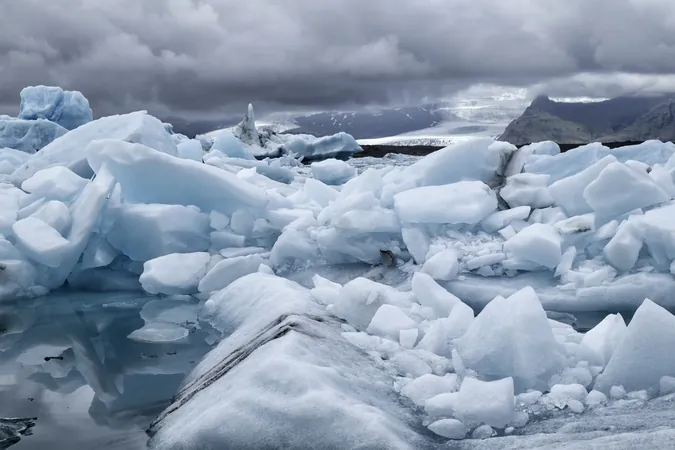
Unlocking the Secrets of the Last Ice Age: A Game-Changer for Future Climate Predictions!
2024-09-27
Author: Daniel
A groundbreaking study from the University of Arizona has unearthed crucial insights linking Earth’s last ice age to upcoming climate scenarios, especially regarding the erratic El Niño phenomenon. This valuable research, published in the prestigious journal *Nature*, harnesses ancient marine data alongside advanced climate modeling to forecast how El Niño may transform as global temperatures continue to rise.
The Global Impact of El Niño Explained
El Niño, marked by the periodic warming of the Pacific Ocean's surface, plays a significant role in shaping global weather patterns. This phenomenon can unleash catastrophic events—from devastating droughts to torrential floods—bringing chaos to ecosystems and communities worldwide. Kaustubh Thirumalai, who co-led the study and serves as an assistant professor in the Department of Geosciences at the University of Arizona, states, “El Niño is a formidable force of nature. It triggers droughts, floods, and wildfires, causing widespread disruption not just to the environment but also across multiple sectors, including agriculture and transportation.”
The researchers delved back to the Last Glacial Maximum, approximately 20,000 years ago, a period marked by enormous ice sheets that blanketed large parts of North America and Europe. By employing innovative climate models, particularly the Community Earth System Model developed with the National Center for Atmospheric Research, they simulated climate conditions from that distant ice age to today's world. It opened a window into understanding how El Niño’s behavior may have varied throughout millennia.
Uncovering Ancient Climate Clues
To authenticate their simulations, the team analyzed tiny marine organisms known as foraminifera, which have fossilized shells that reveal historical ocean temperatures. By extracting these shells from seabed sediments and cross-referencing them with the model's predictions, they discovered a remarkable finding: during the Last Glacial Maximum, El Niño’s variability was significantly lower than what we experience today.
Thirumalai stresses the importance of these findings, stating, “Understanding what might happen to El Niño should be a priority for climate science.” The implications of these changes pose serious risks, potentially exacerbating weather-related disruptions worldwide, impacting everything from food production to infrastructure resilience.
Strategies for Climate Resilience: A Beacon of Hope
The study not only sheds light on historical climate dynamics but also enhances our confidence in making future climate predictions. “If our model can accurately reflect past climate conditions, it raises the likelihood of reliable forecasts regarding future changes in the El Niño system,” explains Thirumalai.
By tapping into data from ancient oceanic records, scientists can develop more robust strategies to mitigate the impacts of upcoming El Niño events. While the study underscores the potential severity of climate disruptions, it also ignites a sense of optimism through informed climate action. Historical perspectives empower researchers to tackle the intricate challenges posed by a warming planet, ensuring protection for vulnerable ecosystems and communities alike.
Final Thoughts: Are We Prepared for the Coming Climate Crisis?
As the world grapples with increasingly erratic weather patterns, understanding El Niño and its shifting behavior becomes ever more crucial. This study serves as a rallying cry for climate scientists and policymakers alike to leverage historical insights in order to combat the complexities of our warming world. The options remain open—will we heed the warnings from Earth’s past to shape a more resilient future? The answer may determine the fate of countless species and human societies around the globe!



 Brasil (PT)
Brasil (PT)
 Canada (EN)
Canada (EN)
 Chile (ES)
Chile (ES)
 España (ES)
España (ES)
 France (FR)
France (FR)
 Hong Kong (EN)
Hong Kong (EN)
 Italia (IT)
Italia (IT)
 日本 (JA)
日本 (JA)
 Magyarország (HU)
Magyarország (HU)
 Norge (NO)
Norge (NO)
 Polska (PL)
Polska (PL)
 Schweiz (DE)
Schweiz (DE)
 Singapore (EN)
Singapore (EN)
 Sverige (SV)
Sverige (SV)
 Suomi (FI)
Suomi (FI)
 Türkiye (TR)
Türkiye (TR)